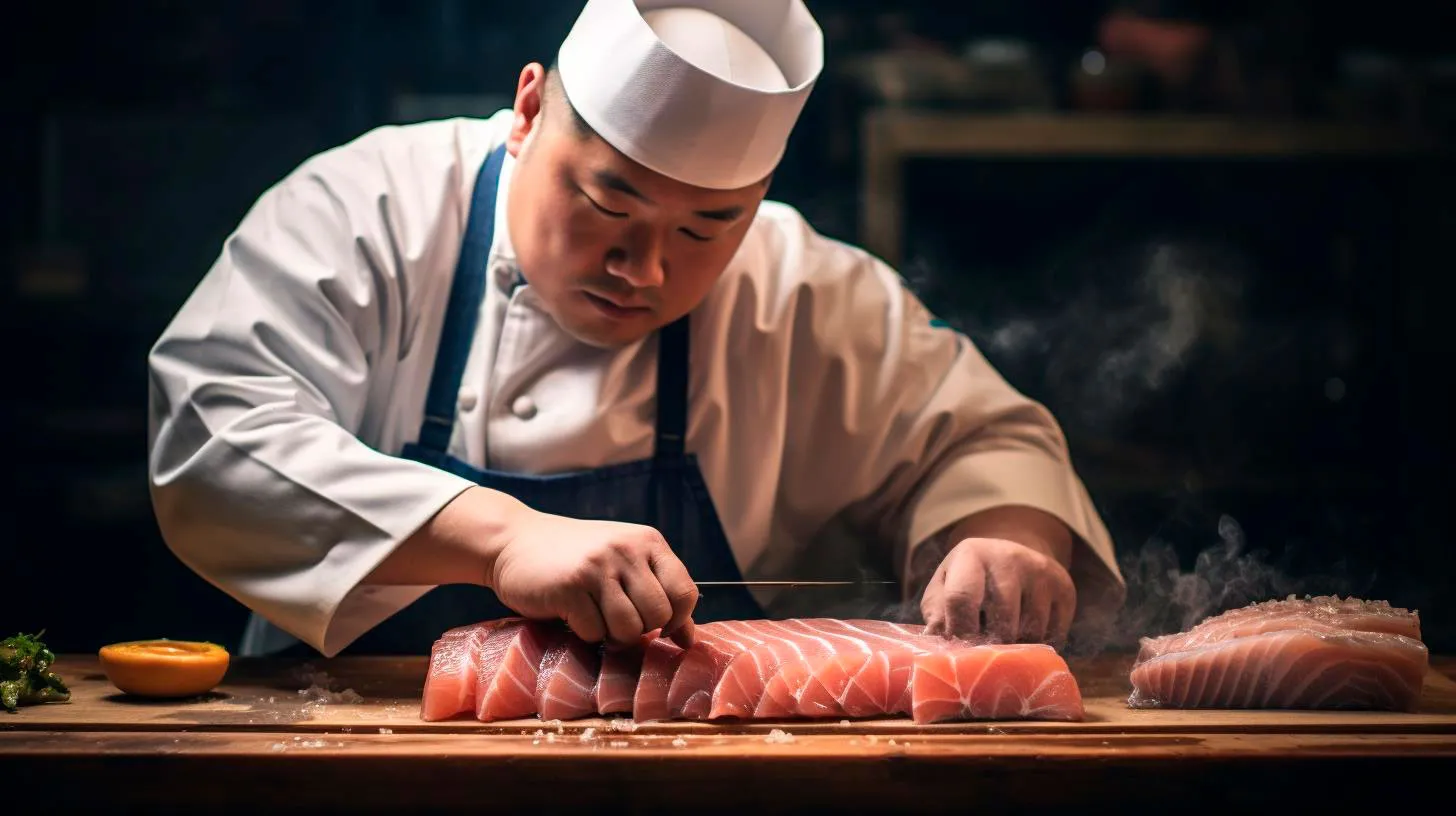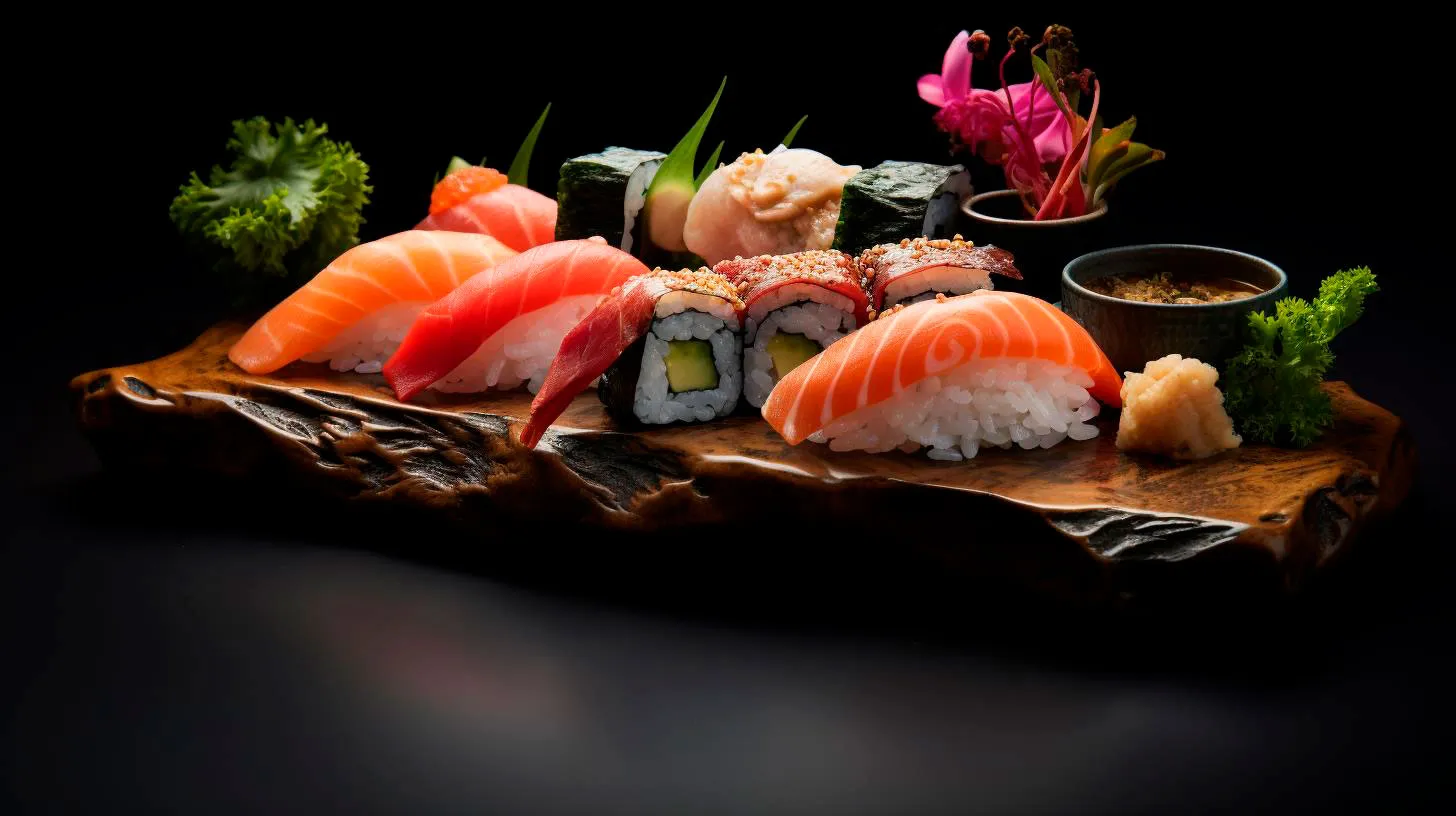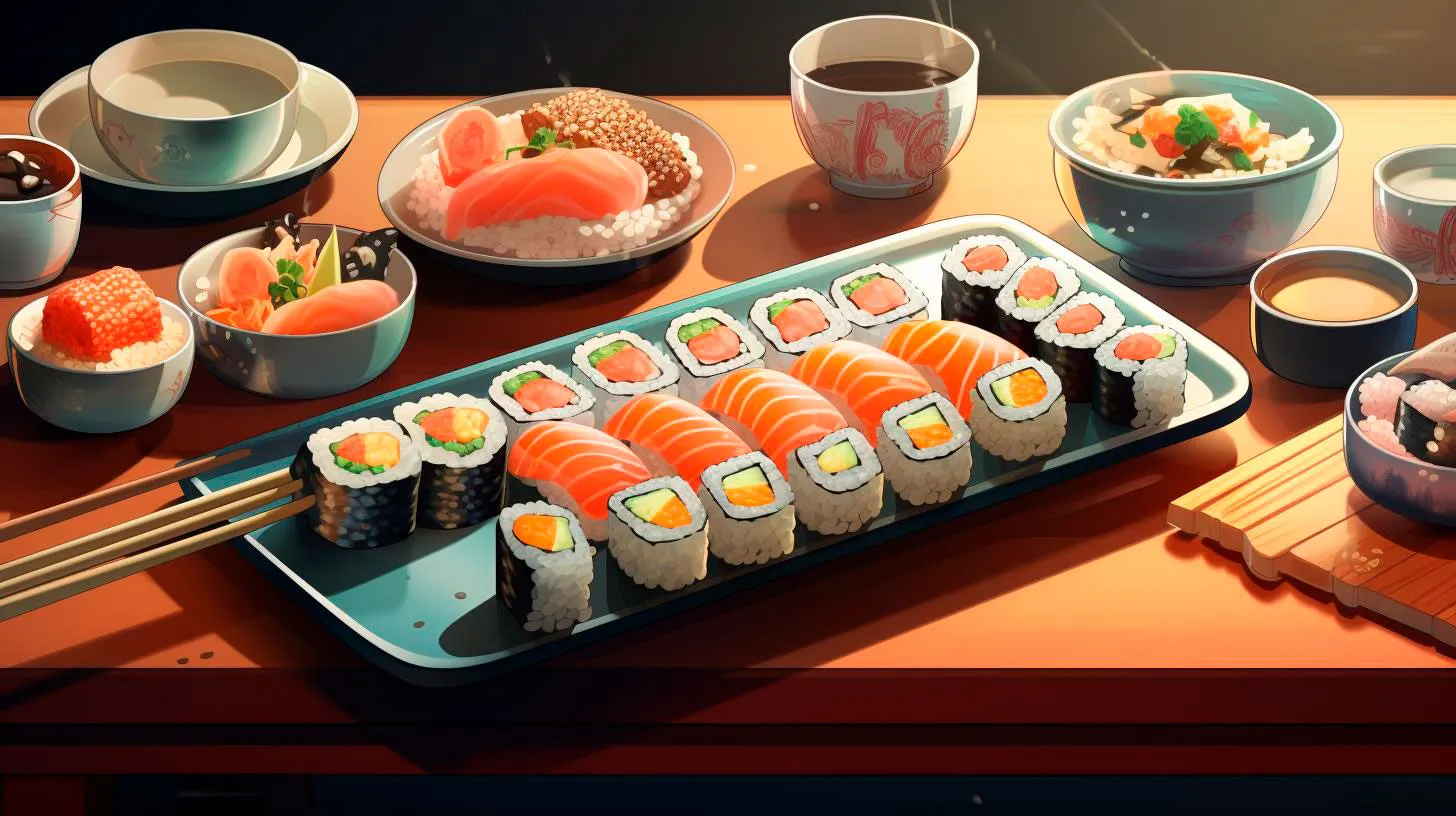From Humble Staple to Culinary Delicacy: The Evolution of Sushi Rice
Over the years, sushi rice has come a long way, evolving from a humble staple to a culinary delicacy. In this article, we will explore the fascinating journey of sushi rice, its characteristics, advantages, and key takeaways.
The Importance of Sushi Rice
Before delving into the evolution of sushi rice, it is crucial to understand its significance in the sushi-making process. Sushi rice, also known as shari, is the foundation of any sushi dish. The perfect sushi rice should possess several key attributes:
- Stickiness: Sushi rice requires the right amount of stickiness to hold the ingredients together without falling apart.
- Texture: The texture should be soft and slightly chewy, providing a pleasant mouthfeel.
- Flavor Balance: Sushi rice should have a delicate balance of sweetness, saltiness, and acidity to complement the other ingredients.
The Evolution of Sushi Rice
Sushi rice has a rich history dating back to ancient Japan. Originally, it was consumed as a fermented dish known as namanare. During the Muromachi period, sushi rice was eaten alongside fish, but it was during the Edo period that sushi as we know it today began to take shape.
During this time, a sushi chef named Hanaya Yohei introduced a revolutionary technique known as nigiri sushi. Yohei refined the preparation and presentation of sushi, focusing on enhancing the flavors of the fish with the help of vinegared rice. Vinegar was added to sushi rice to improve its texture, enhance its flavor, and act as a natural preservative.
Over time, sushi rice continued to evolve. In the early 20th century, the invention of the shari mixing machine simplified the preparation process, leading to increased accessibility of sushi. The utilization of refrigeration technology further improved the quality and shelf-life of sushi rice, allowing it to reach a wider audience.
The Characteristics of Modern Sushi Rice
Today, sushi rice boasts several distinct characteristics that set it apart:
- Grain Quality: The choice of rice is paramount. Japanese short-grain rice is commonly used, renowned for its stickiness and ability to absorb flavors.
- Vinegar Mixture: The vinegar mixture, known as su-meshi, plays a pivotal role in the flavor profile of sushi rice. Different chefs have their own secret recipe, combining rice vinegar, sugar, and salt.
- Seasoning Technique: The process of seasoning sushi rice involves gently folding the vinegar mixture into the cooked rice while fanning it to cool and remove excess moisture.
Advantages of Evolved Sushi Rice
The evolution of sushi rice brings several advantages:
- Enhanced Flavor: The inclusion of vinegar and seasoning elevates the taste of sushi rice, creating a well-rounded and satisfying bite.
- Prolonged Shelf Life: The use of vinegar as a natural preservative extends the shelf life of sushi rice, allowing it to be enjoyed for longer periods.
- Improved Texture: The technique of folding the vinegar mixture into the rice ensures a consistent and pleasant texture throughout.
Key Takeaways
The evolution of sushi rice has transformed it from a humble staple into a culinary delicacy. Here are the key takeaways:
- Sushi rice is an essential component of sushi, providing stickiness, texture, and a delicate balance of flavors.
- The use of vinegar in sushi rice originated during the Edo period, revolutionizing the way sushi was made and consumed.
- Technological advancements have simplified the preparation process and improved the quality and accessibility of sushi rice.
- Modern sushi rice is characterized by the choice of rice, vinegar mixtures, and seasoning techniques.
- The advantages of evolved sushi rice include enhanced flavor, prolonged shelf life, and improved texture.
Sushi rice continues to evolve alongside the ever-changing culinary landscape. The careful selection of ingredients, skilled techniques, and attention to detail make sushi an art form, with sushi rice as its canvas.
Sustainably Sourced Ingredients Elevate Sushi Rice to New Heights
In recent years, there has been a growing demand for sustainably sourced ingredients in the food industry, and sushi rice is no exception. By using sustainably sourced ingredients, sushi rice is being elevated to new heights, offering both environmental benefits and improved taste.
The Importance of Sustainable Sourcing
With the increasing awareness of climate change and its impact on the planet, consumers are becoming more conscious of their food choices. Sustainable sourcing ensures that the ingredients used in sushi rice production are obtained in an environmentally responsible manner, without depleting natural resources or harming ecosystems. This not only helps preserve the delicate balance of our oceans but also supports local communities and promotes fair trade.
Sustainable sourcing in sushi rice production involves various practices, such as:
- Collaborating with local farmers who embrace sustainable farming techniques.
- Reducing water consumption in rice cultivation through innovative irrigation methods.
- Using organic fertilizers and natural pest control methods to minimize environmental impact.
- Supporting initiatives that protect biodiversity and wildlife habitats.
By adopting these sustainable practices, sushi rice producers contribute to a healthier planet and help secure the future of this beloved cuisine.
The Benefits of Sustainably Sourced Sushi Rice
Opting for sustainably sourced sushi rice brings several advantages to the table:
1. Superior Flavor and Texture
Sustainably sourced sushi rice is cultivated using traditional farming methods that prioritize the quality of the grains. The result is a rice with exceptional flavor and texture, adding depth to every sushi roll. The care taken during the cultivation process allows for a more refined product that truly enhances the overall sushi experience.
2. Healthier Option
Sustainable farming practices steer clear of chemical pesticides and fertilizers, ensuring that the sushi rice is free from harmful substances. This makes sustainably sourced sushi rice a healthier option for both consumers and the environment.
3. Supporting Local Communities
By choosing sustainably sourced sushi rice, consumers contribute to the livelihood of local farmers who rely on eco-friendly farming practices. This supports local economies and helps build stronger, more sustainable food systems.
4. Meeting Growing Consumer Demand
Statistics show a significant increase in consumer demand for sustainably sourced products. By offering sushi rice made from sustainably sourced ingredients, restaurants and sushi bars can cater to this growing market segment and attract more environmentally conscious customers.
Key Takeaways
Sushi rice is a fundamental component of this popular cuisine, and sustainably sourced ingredients provide numerous benefits:
- Sustainable sourcing in sushi rice production helps preserve the environment and supports local communities.
- Sustainably sourced sushi rice offers superior flavor and texture.
- Choosing sustainably sourced sushi rice contributes to a healthier option for consumers.
- This growing consumer demand for sustainability presents an opportunity for businesses to attract more customers.
As sushi continues to captivate taste buds worldwide, the quality of sushi rice is gaining recognition as an essential element that shouldn’t be overlooked. Embracing sustainably sourced ingredients in sushi rice production elevates this humble grain to new heights, delivering an extraordinary culinary experience while contributing to a more sustainable future.
The Intricate Art of Preparing Sushi Rice: A Masterful Skill
Its preparation requires precision, patience, and a deep understanding of the art form. Join us as we explore the intricate art of preparing sushi rice.
The Perfect Sushi Rice: A Delicate Balance
Preparing sushi rice might seem like a simple task, but achieving the perfect balance of flavors, textures, and consistency is an art in itself. Here are some essential steps that sushi chefs follow to create the ideal sushi rice:
- Selection of Rice: To create sushi rice, a short-grain rice variety like japonica or sushi rice is crucial. The high starch content in these types of rice contributes to the desired stickiness that holds sushi rolls together.
- Washing: Before cooking the rice, it’s essential to wash it thoroughly to remove excess starch. This step ensures that the rice doesn’t become overly sticky or clumpy.
- Proper Measurements: Achieving the perfect balance between rice and water is key. The ratio typically used is one part rice to one part water, but experienced sushi chefs adjust the water according to the specific rice variety and personal preferences.
- Cooking: Cooking sushi rice requires precise temperature and timing. The rice is often cooked in a traditional Japanese rice cooker, ensuring even heat distribution for consistent results.
- Combining with Vinegar Mixture: After the rice is cooked, it is carefully transferred to a large, flat container. While still hot, it is mixed with a vinegar mixture that includes rice vinegar, sugar, and salt. This process gives the rice its signature tangy flavor and glossy appearance.
Each step in the process contributes to the final result: sushi rice that not only complements the fish and other ingredients but also stands out on its own.
Importance of Properly Prepared Sushi Rice
The meticulous preparation of sushi rice is essential for multiple reasons:
- Improved Taste: Properly prepared sushi rice enhances the flavors of the other ingredients, creating a harmonious and balanced taste experience.
- Texture: The stickiness of the rice helps to hold the sushi roll together while providing a smooth mouthfeel.
- Professional Presentation: Sushi chefs take great pride in their presentation, and perfectly prepared rice is the foundation for visually appealing sushi rolls and nigiri.
- Consistency: By following a specific sushi rice preparation technique, chefs ensure that every sushi roll or nigiri they create maintains the same level of quality and taste.
Key Takeaways
The art of preparing sushi rice is an intricate process that requires precision, technical skill, and a deep appreciation for the craft. Here are the key takeaways:
- Sushi rice, though often overlooked, is a crucial component of any sushi dish.
- The selection of the right rice variety and precise measurements are key to achieving the desired stickiness and texture.
- Proper washing, cooking, and combining with a vinegar mixture are critical steps in the sushi rice preparation process.
- Well-prepared sushi rice improves the overall taste, texture, and appearance of sushi dishes.
Next time you enjoy a plate of sushi, take a moment to appreciate the intricate artistry that goes into the preparation of sushi rice. It truly is a masterful skill that elevates the entire sushi experience.
Harmony on a Plate Sushi Rice Symbolizes the Japanese Philosophy of Balance
Central to this exquisite dish is sushi rice, which serves as the foundation for every sushi creation. With its perfect blend of flavors and textures, sushi rice exemplifies the Japanese philosophy of achieving equilibrium in all aspects of life.
Sushi Rice: The Soul of Sushi
In sushi-making, sushi rice is considered the soul of the dish. It is meticulously prepared using a specific type of rice, known as short-grain Japonica rice, which is characterized by its stickiness when cooked. This unique texture is vital to hold the various ingredients together, ensuring the sushi roll maintains its form.
While sushi rice seems simple, its preparation requires skill and precision. The rice grains are washed multiple times to remove excess starch and improve the final texture. Then, it is cooked with just the right water-to-rice ratio to achieve the perfect balance of moisture and firmness. However, what truly sets sushi rice apart is its seasoning. A mixture of rice vinegar, sugar, and salt is gently folded into the rice, giving it a tangy and slightly sweet taste.
Balancing Flavors and Textures
The essence of sushi lies in the harmony of flavors and textures. Sushi rice acts as a neutral canvas, allowing the ingredients to shine while enhancing their natural tastes. The vinegared rice complements the other elements in the sushi, creating a well-balanced symphony of flavors.
Moreover, the sticky nature of sushi rice imparts a unique mouthfeel to each bite. This characteristic texture provides a satisfying contrast to the crispiness of vegetables, the creaminess of avocado, or the tenderness of fish. The combination of soft and firm textures adds depth to the overall sushi experience, delighting the palate with every bite.
The Philosophy Behind Sushi Rice
Japanese philosophy often centers around finding balance in all aspects of life. This principle extends to the culinary world, and sushi rice exemplifies this philosophy perfectly. Here are some key takeaways that sushi rice can teach us about achieving harmony and balance:
- Attention to Detail: Just like the careful washing, cooking, and seasoning of sushi rice, paying attention to even the smallest details can lead to remarkable outcomes in life.
- The Power of Combination: Sushi rice demonstrates that the successful fusion of different ingredients can result in a harmonious and enjoyable experience, reminding us of the value of diversity and collaboration.
- Adaptability: Sushi rice serves as an adaptable base that can complement an array of ingredients. Similarly, being open to change and adaptable in daily life can lead to greater flexibility and resilience.
- Balance in Proportions: The precise ratio of vinegar, sugar, and salt in sushi rice emphasizes the importance of proportionality, reminding us that moderation in all things is key.
Final Thoughts
Sushi rice not only tantalizes our taste buds but also represents the core principles that define Japanese culture. Its delicate balance of flavors and textures reflects the quest for equilibrium in all aspects of life. By appreciating the art of sushi-making and the significance of sushi rice, we gain a deeper understanding of the philosophy of balance ingrained in Japanese society.
So, the next time you savor a piece of sushi, take a moment to contemplate the beauty of the perfectly seasoned sushi rice and the profound philosophy it embodies.



